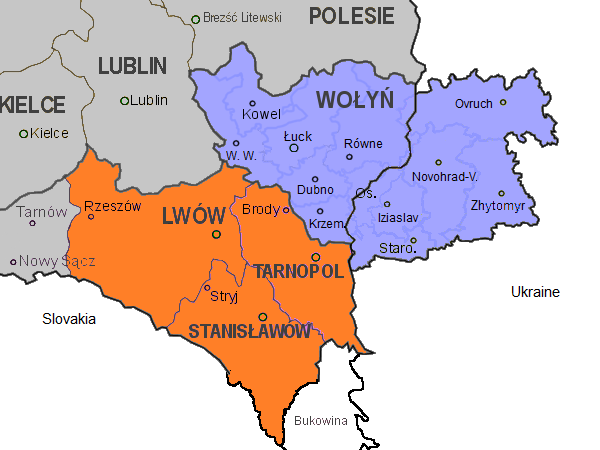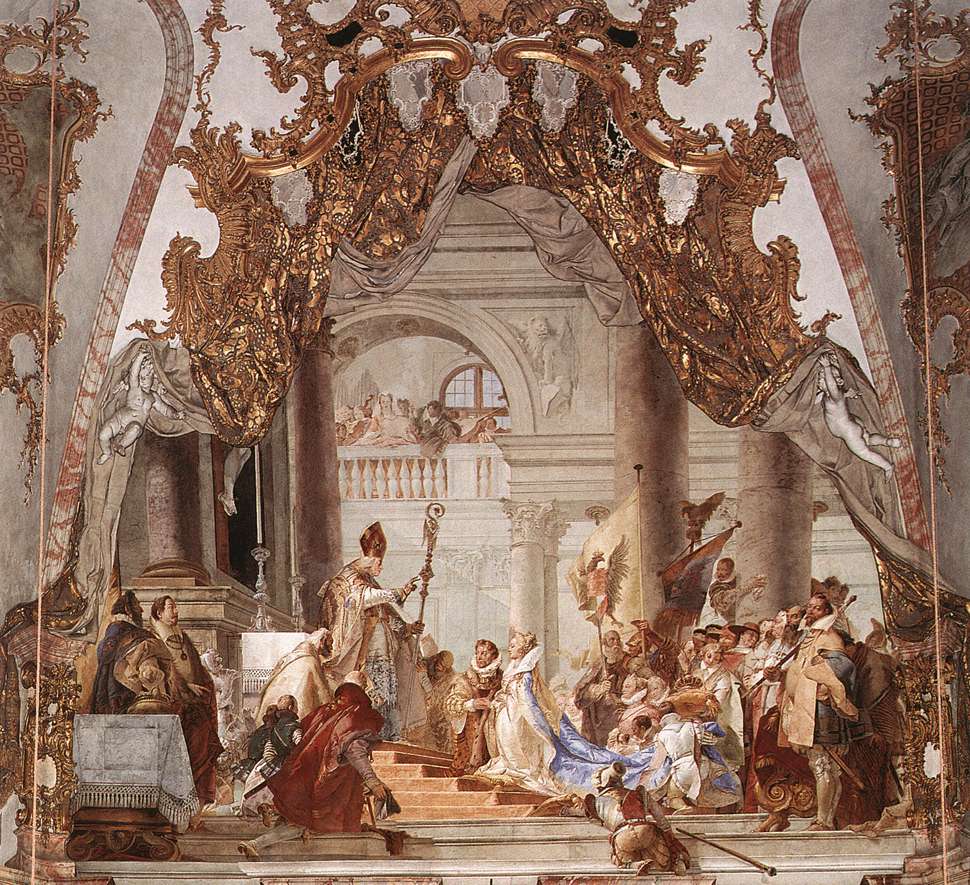|
Ratibor I, Duke Of Pomerania
Ratibor I (''Racibor'') ( 1124 – 1156) of the House of Pomerania (''Griffins'') was Duke of Pomerania. He was married to Pribislawa, and was the ancestor of the ''Ratiborides'' sideline of the Griffins. Initially he might have ruled the Land of Słupsk-Sławno and also ruled the duchy of his brother Wartislaw I who was slain by pagans in place of his minor sons from 1136 to 1156. In 1135, he raided the Norwegian city of Kungahälla (now Kungälv in Sweden). During the Wendish Crusade in 1147, he managed to end the siege of Szczecin together with Wolin bishop Adalbert. Family In 1153, Ratibor and Adalbert founded Stolpe Abbey at the Peene River near Gützkow. With Pribislawa Iaroslavovna (Princess of Volhynia), he had at least four children. * Swantepolk II (or Swantopolk), who succeeded his father in Słupsk-Sławno * Margareta (or Margarete) ∞ Bernhard I of Ratzeburg * Bogislav (or Wartislaw) * Dobroslawa See also * List of Pomeranian duchi ... [...More Info...] [...Related Items...] OR: [Wikipedia] [Google] [Baidu] |
Volhynia
Volhynia or Volynia ( ; see #Names and etymology, below) is a historic region in Central and Eastern Europe, between southeastern Poland, southwestern Belarus, and northwestern Ukraine. The borders of the region are not clearly defined, but in Ukraine it is roughly equivalent to Volyn Oblast, Volyn and Rivne Oblasts; the territory that still carries the name is Volyn Oblast. Volhynia has changed hands numerous times throughout history and been divided among competing powers. For centuries it was part of the Polish-Lithuanian Commonwealth. After the Russian annexation during the Partitions of Poland, all of Volhynia was made part of the Pale of Settlement on the southwestern border of the Russian Empire. Important cities include Rivne, Lutsk, Zviahel, and Volodymyr (city), Volodymyr. Names and etymology *, ; * ; *, ; * or ; *; * ; *; *; * or (both ); Volhynian German: , , or (all ); *, or . The alternative name for the region is Lodomeria after the city of Volodymyr (city ... [...More Info...] [...Related Items...] OR: [Wikipedia] [Google] [Baidu] |
Dukes Of Pomerania
This is a list of the duchies and dukes of Pomerania. Dukes of the Slavic Pomeranian tribes (All Pomerania) The lands of Pomerania were firstly ruled by local tribes, who settled in Pomerania around the 10th and 11th centuries. Non-dynastic In 1106, Pomerania is divided by his two older sons: Wartislaw I, Duke of Pomerania, Wartislaw, who founded the House of Pomerania and the Duchy of Pomerania, and Swietopelk I, Duke of Pomerania, Świętopełk I. After Swietopelk's death, his lands were occupied by the Saxon prince Lothar of Supplinburg. In 1155, the lands regained independence under Sobieslaw I, who founded the dynasty of the Samborides, and the Duchy of Pomerelia. Duchy of Pomerania The Duchy resulted from the partition of Świętobor, Duke of Pomerania, in which his son Wartislaw inherited the lands that would become in fact known as ''Pomerania''. Partitions of Pomerania First partition 1155–1264 In 1155, Pomerania was divided in Pomerania-Szczecin and Pomer ... [...More Info...] [...Related Items...] OR: [Wikipedia] [Google] [Baidu] |
Christians Of The Wendish Crusade
A Christian () is a person who follows or adheres to Christianity, a Monotheism, monotheistic Abrahamic religion based on the life and teachings of Jesus in Christianity, Jesus Christ. Christians form the largest religious community in the world. The words ''Christ (title), Christ'' and ''Christian'' derive from the Koine Greek title (), a translation of the Biblical Hebrew term ''mashiach'' () (usually rendered as ''messiah'' in English). While there are diverse interpretations of Christianity which sometimes conflict, they are united in believing that Jesus has a unique significance. The term ''Christian'' used as an adjective is descriptive of anything associated with Christianity or Christian churches, or in a proverbial sense "all that is noble, and good, and Christ-like." According to a 2011 Pew Research Center survey, there were 2.3 billion Christians around the world, up from about 600 million in 1910. Today, about 37% of all Christians live in the Americas, about 26% ... [...More Info...] [...Related Items...] OR: [Wikipedia] [Google] [Baidu] |
1156 Deaths
Year 1156 ( MCLVI) was a leap year starting on Sunday of the Julian calendar. Events By place Levant * Spring – Raynald of Châtillon, prince of Antioch, makes an alliance with Thoros II (the Great), ruler of Armenian Cilicia. He invades Cyprus and conducts a widespread plundering of the Byzantine island. The Crusaders and the Armenian forces march up and down the island robbing and pillaging every building, church and convent as well as shops and private houses. The crops are burnt; the herds are rounded up – together with all the population – and driven down to the coast. The massacre lasts about three weeks; on the rumor of a Byzantine fleet in the offing, Raynald gives the order for embarkation. The Crusader ships are loaded with booty, and every Cypriot is forced to ransom himself. Europe * January 20 – Freeholder Lalli slays the English missionary-bishop Henry with an axe, on the ice of Lake Köyliönjärvi in Finland (according to legend ... [...More Info...] [...Related Items...] OR: [Wikipedia] [Google] [Baidu] |
1120s Births
Eleven or 11 may refer to: *11 (number) * One of the years 11 BC, AD 11, 1911, 2011 Literature * ''Eleven'' (novel), a 2006 novel by British author David Llewellyn *''Eleven'', a 1970 collection of short stories by Patricia Highsmith *''Eleven'', a 2004 children's novel in The Winnie Years by Lauren Myracle *''Eleven'', a 2008 children's novel by Patricia Reilly Giff *''Eleven'', a short story by Sandra Cisneros Music * Eleven (band), an American rock band * Eleven: A Music Company, an Australian record label *Up to eleven, an idiom from popular culture, coined in the movie ''This Is Spinal Tap'' Albums * ''11'' (The Smithereens album), 1989 * ''11'' (Ua album), 1996 * ''11'' (Bryan Adams album), 2008 * ''11'' (Sault album), 2022 * ''Eleven'' (Harry Connick, Jr. album), 1992 * ''Eleven'' (22-Pistepirkko album), 1998 * ''Eleven'' (Sugarcult album), 1999 * ''Eleven'' (B'z album), 2000 * ''Eleven'' (Reamonn album), 2010 * ''Eleven'' (Martina McBride album), 2011 * ''Eleven'' (Mr F ... [...More Info...] [...Related Items...] OR: [Wikipedia] [Google] [Baidu] |
Lands Of Schlawe And Stolp
The Schlawe and Stolp Land (also known as Słupsk and Sławno Land) is a historical region in Pomerania, centered on the towns of Sławno (''Schlawe'') and Słupsk (''Stolp'') in Farther Pomerania (Eastern Pomerania), present-day Poland. The area holds historical significance as it was initially ruled by a cadet branch of the House of Pomerania, House of Griffin and did not belong to the Duchy of Pomerania (''Slavinia'') under Duke Wartislaw I, Duke of Pomerania, Wartislaw I and his descendants when they became vassals of the Holy Roman Emperor in 1181. It was ruled by the Samborides, Samboride dukes of Pomerelia from 1227 and conquered by Margrave Waldemar, Margrave of Brandenburg-Stendal, Waldemar of Brandenburg-Stendal in 1309. The region was not incorporated into the Duchy of Pomerania until 1317. Geography The small region comprises the easternmost lands of historic Farther Pomerania, where the Wieprza and Słupia Rivers empty into the Baltic Sea. The area lay beyond the ter ... [...More Info...] [...Related Items...] OR: [Wikipedia] [Google] [Baidu] |
History Of Pomerania
The history of Pomerania starts shortly before 1000 AD, with ongoing conquests by newly arrived Polans (western), Polan rulers. Before that, the area was recorded nearly 2000 years ago as Germania, and in modern times Pomerania has been split between Germany and Poland. Its name comes from the Old Polish language, Old Polish ''po more'', which means "(land) at the sea". Settlement in the area started by the end of the Vistula Glacial Stage, about 13,000 years ago. Archeological traces have been found of various cultures during the Stone Age, Stone and Bronze Age, of Vistula Veneti, Veneti and Germanic peoples during the Iron Age and, in the Middle Ages, Slavs, Slavic tribes and Vikings.Reallexikon der germanischen Altertumskunde, RGA 25 (2004), p.422From the First Humans to the Mesolithic Hunters in the Northern German Lowlands, Current Results and Trends - THOMAS TERBERGER. From: Across the western Baltic, edited by: Keld Møller Hansen & Kristoffer Buck Pedersen, 2006, , Sydsjæl ... [...More Info...] [...Related Items...] OR: [Wikipedia] [Google] [Baidu] |
List Of Pomeranian Duchies And Dukes
This is a list of the duchies and dukes of Pomerania. Dukes of the Slavic Pomeranian tribes (All Pomerania) The lands of Pomerania were firstly ruled by local tribes, who settled in Pomerania around the 10th and 11th centuries. Non-dynastic In 1106, Pomerania is divided by his two older sons: Wartislaw I, Duke of Pomerania, Wartislaw, who founded the House of Pomerania and the Duchy of Pomerania, and Swietopelk I, Duke of Pomerania, Świętopełk I. After Swietopelk's death, his lands were occupied by the Saxon prince Lothar of Supplinburg. In 1155, the lands regained independence under Sobieslaw I, who founded the dynasty of the Samborides, and the Duchy of Pomerelia. Duchy of Pomerania The Duchy resulted from the partition of Świętobor, Duke of Pomerania, in which his son Wartislaw inherited the lands that would become in fact known as ''Pomerania''. Partitions of Pomerania First partition 1155–1264 In 1155, Pomerania was divided in Pomerania-Szczecin and Pomer ... [...More Info...] [...Related Items...] OR: [Wikipedia] [Google] [Baidu] |
Swantepolk I, Duke Of Pomerania
:''You may also be looking for Swietopelk II, Duke of Pomerania'' Swietopelk I (, also referred to as Swantopolk I), (, died before 1148) sometimes called "Swietopelk of Nakło" (Polish: ''Świętopełk Nakielski'') to distinguish him from other rulers of the same name, was one of the first known Dukes of Pomerania; in the years 1109/13 to 1121 he ruled over Pomerelia. He is usually thought to have been the son of Świętobór I (Swantibor),Kowalenko, p. 429. although other historians make him a brother of Świętobór (as well as of a third Pomeranian duke, Dumar) and son of Siemomysl I.Rymar, p. 609. He is mentioned in the chronicle of ''Gallus Anonymus''. The 16th-century Pomeranian chronicler Thomas Kantzow also states that Swietopelk was one of the younger sons of Swietibor, who ruled Eastern Pomerania after his father was deposed.Rymar, p. 37. The Prussian historian Ludwig Giesebrecht, who gave approximate dates for the duke's birth and death, considered him the originato ... [...More Info...] [...Related Items...] OR: [Wikipedia] [Google] [Baidu] |
Casimir I, Duke Of Pomerania
Casimir I (or Kasimir I) (after 1130 – 1180) was Duchy of Pomerania, duke of Pomerania since his uncle Ratibor I's death in 1155/56. A son of Wartislaw I, he co-ruled Pomerania with his older brother Bogislaw I, Duke of Pomerania, Bogislaw I, receiving Pomerania-Demmin as his share just as Bogislaw received Pomerania-Stettin, and ruling the remainder in common. After the lost 1164 Battle of Verchen, where Casimir and Bogislaw aided an Obodrites, Obodrite rebellion against the duke of Duchy of Saxony, Saxony, Henry the Lion, Casimir and Bogislaw joined Saxony receiving their respective part duchies as a fief from Henry the Lion. Casimir also received one third of the Denmark, Danish ''terra'' Wolgast. When Saxony allied with the Danes to subdue the Rani (Slavic tribe), Rani kingdom of Rügen in 1168, Casimir as well as Bogislaw aided Henry. Casimir also managed to take control in Circipanes, Circipania, thereby expanding Pomerania to the West. Casimir participated in other campaig ... [...More Info...] [...Related Items...] OR: [Wikipedia] [Google] [Baidu] |



